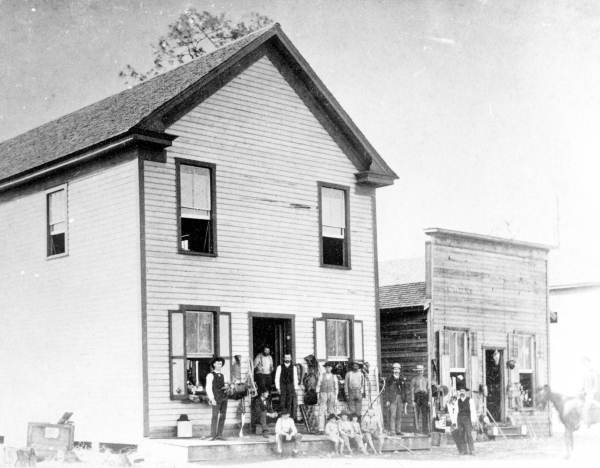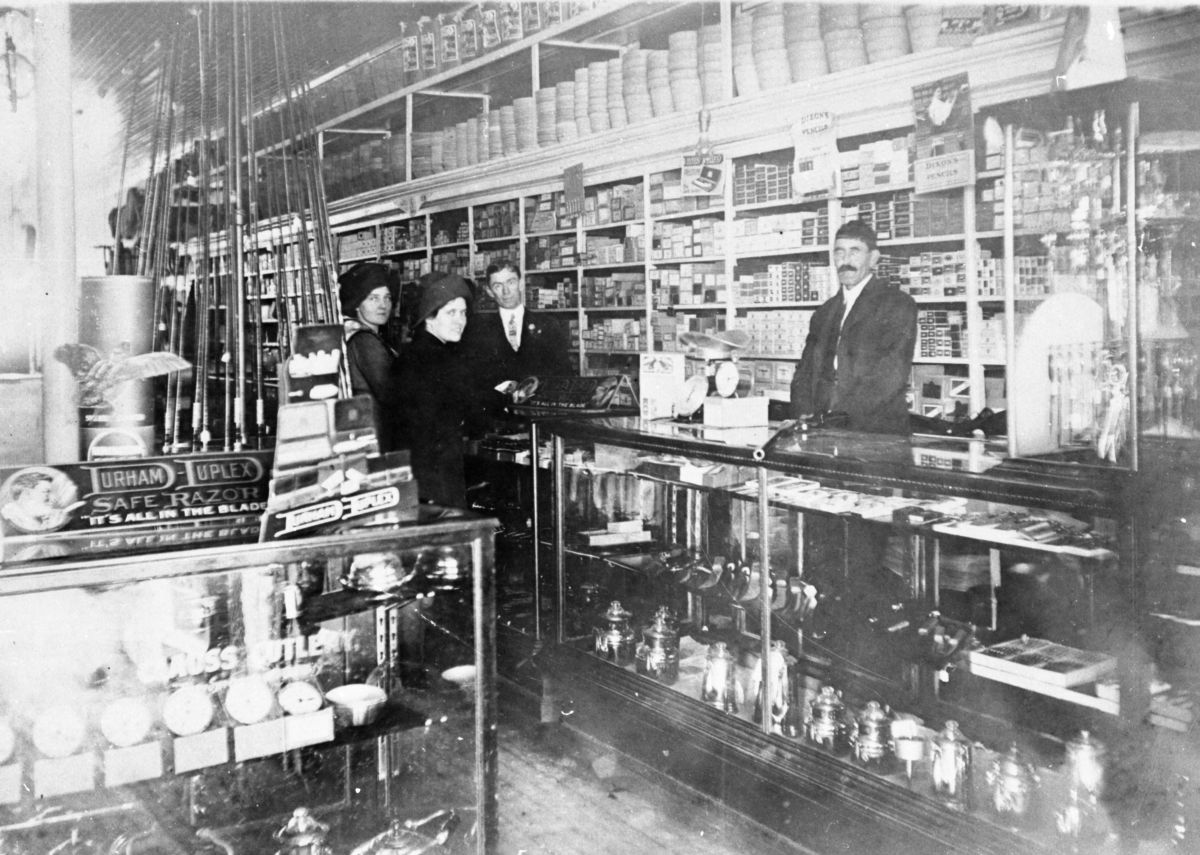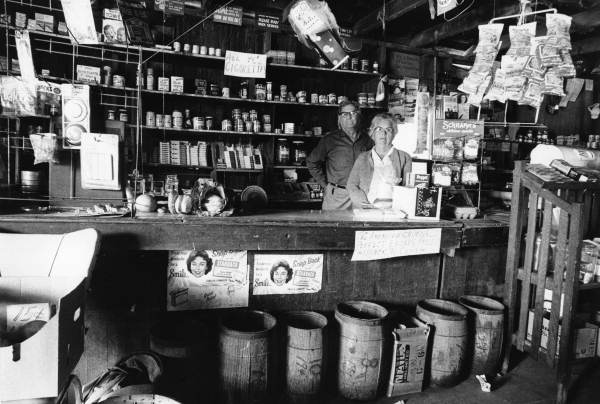Description of previous item
Description of next item
The Old General Store
Published November 11, 2015 by Florida Memory
Think back to the 19th century for a moment, a time before the Internet, big box stores, or even paved highways. Where did Floridians of that era get the goods they couldn’t produce at home? Even without our modern conveniences, families still managed to get their hands on books, manufactured cloth, metal goods, and countless other products that originated from far away. For most 19th and early 20th century Floridians, many of these goods came from a general store.
The general store – sometimes called a dry goods store or emporium or some other name – had a little bit of everything. Foodstuffs like cheese, crackers, hardtack, wheat flour, rice, coffee, and sugar were available, as were household goods like pots and pans, lamps, nails, utensils, furniture, tools, and even stoves!
In some communities, if there wasn’t a separate feed store in business, the general store might also be the go-to place for farming supplies and equipment. Shovels and rakes, seed, almanacs, feed, rope, and any number of other useful essentials could be found lining the shelves.
It also wasn’t uncommon for other businesses to set up shop in a corner of the store or in a second-story office. Doctors, dentists, lawyers, post offices, and even banks made their homes in general store buildings. All this activity and commerce made general stores popular places for meeting, socializing, and conducting business of all kinds.
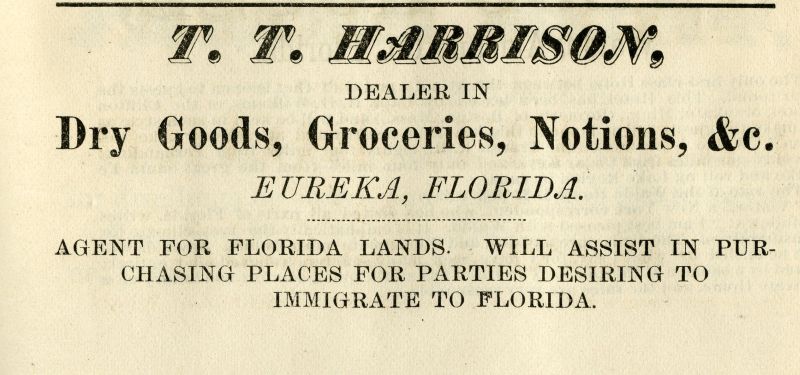
Advertisement for the firm of T.T. Harrison in Eureka, Florida – printed on page 83 of H.D. Bicaise, A Guide to the Land of Flowers (Charleston: Parry, Cook & Co., 1878). Copies of this and a number of other 19th century Florida guidebooks are available at the State Library of Florida.
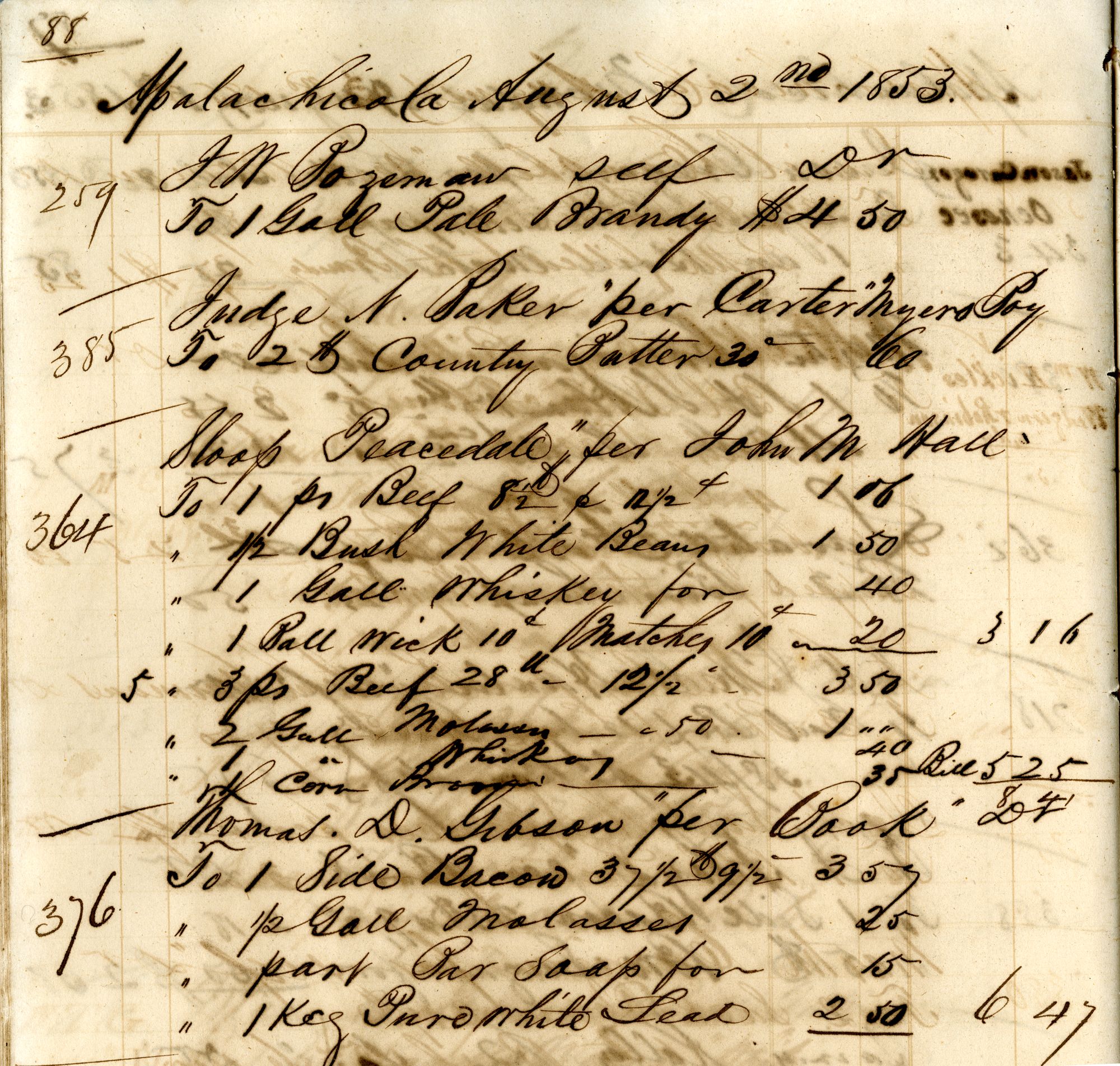
A few sample transactions from the ledger of a general store operated by the Orman family in Apalachicola. Purchases listed include brandy, country butter, beef, white beans, whiskey, matches, molasses, corn, bacon, soap, and pure white lead. These purchases were recorded on August 2, 1853 (Box 2, Orman Family Papers – Series 1844, State Archives of Florida).
The shopping experience was often a bit different than the self-serve method we use today. The proprietor or his/her clerk generally waited on each customer, pulling the requested items one by one and marking them down in a ledger to calculate the price. Locals usually had a line of credit with the store, which they used to charge purchases until they could obtain the necessary cash to pay off their bill. In 19th century Florida, many families outside of town relied on selling surplus cotton, corn, hides, or other products to provide the cash they needed. Once they received the proceeds, they were able to settle their bill. Sometimes families sold or traded their farm products directly to the store as part of their method of payment.
For historians, the records from these general stores are invaluable for studying the lives of everyday families in 19th century Florida. By looking at what people were buying and selling, we can get a better idea of what the average household contained, what folks were eating, what kinds of medicines were popular, and so on. For genealogists, there’s always the chance of coming across purchases made by a relative, which can provide a unique perspective into that ancestor’s daily life. The State Archives holds ledgers and papers from several general stores around the state, and they are available for use in our research facility in Tallahassee.
Even today, the general store lives on in popular memory as one of the key institutions of the standard 19th century Florida town. A number of general stores survived into the 20th century, and a few have even made it into our own times. Others have been replicated as part of tourist attractions and museum displays.
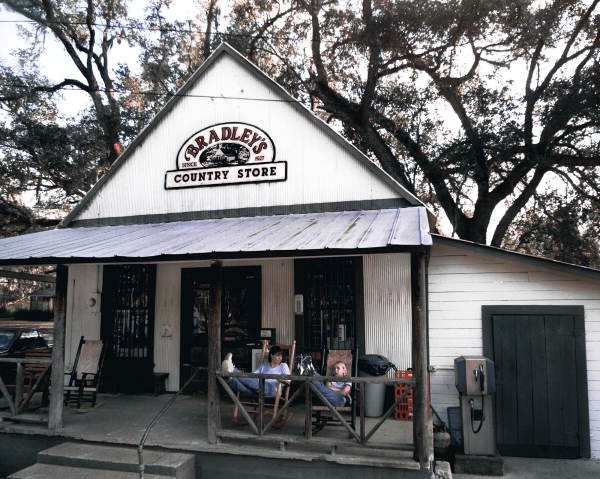
Bradley’s Country Store on Centerville Road in Leon County (still in operation). The structure was built in 1927, and was listed on the National Register of Historic Places in 1984 (photo circa 1990).
Is there a general store in your Florida community? If so, what are your favorite items to purchase when you’re visiting? Share this post on Facebook so friends and family can join in the conversation.
Cite This Article
Chicago Manual of Style
(17th Edition)Florida Memory. "The Old General Store." Floridiana, 2015. https://www.floridamemory.com/items/show/321956.
MLA
(9th Edition)Florida Memory. "The Old General Store." Floridiana, 2015, https://www.floridamemory.com/items/show/321956. Accessed December 15, 2025.
APA
(7th Edition)Florida Memory. (2015, November 11). The Old General Store. Floridiana. Retrieved from https://www.floridamemory.com/items/show/321956

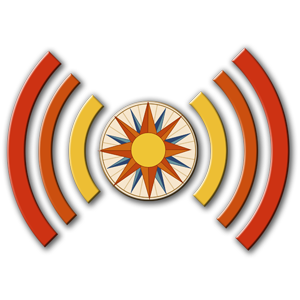 Listen: The Latin Program
Listen: The Latin Program